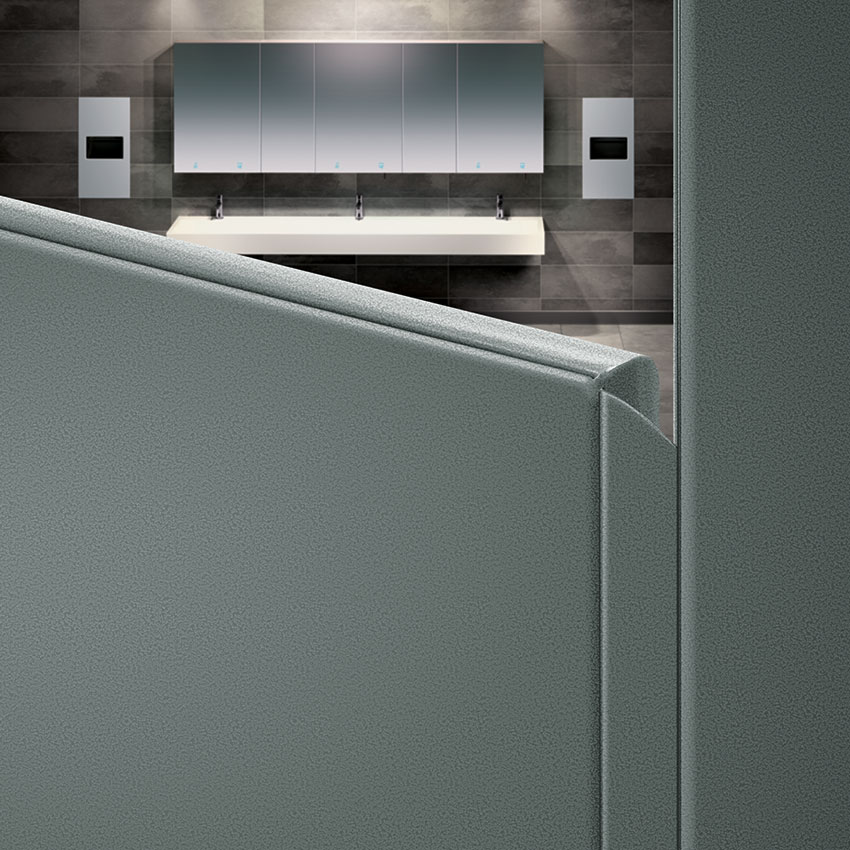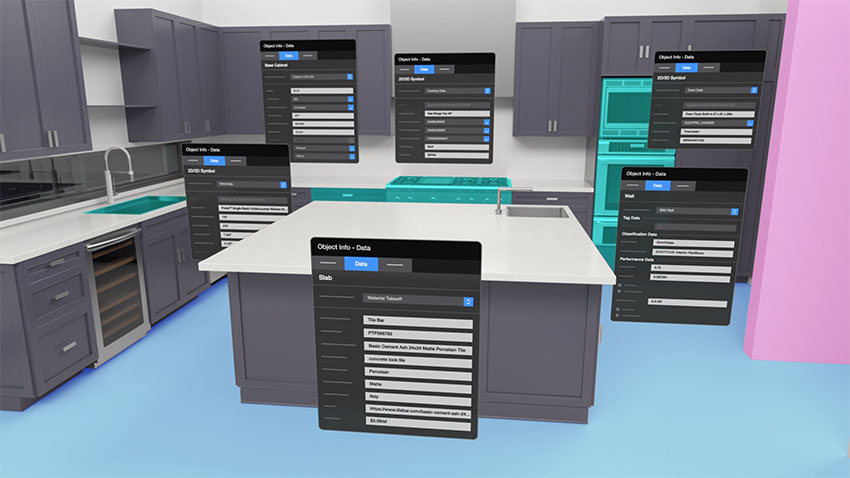Achieving Sustainability Goals Through Materials and Design
Sanitary Napkin and Tampon Dispensers
Sanitary napkin and tampon dispensers come in a variety of capacities and can accommodate coin or free operations. Some are surface-mounted while others can be fully or semi-recessed to free up space within the washroom. Coin boxes should be keyed separately from door locks for extra security.
Waste Receptacles
Waste receptacles come in a range of sizes, from small to large, and many configurations, including floor-standing, surface-mounted, recessed, and semi-recessed. To encourage good hygiene practices, traffic flow, and reduce floor waste, a receptacle can be placed near exits for building patrons who prefer to open doors with paper towels. Three-bin recycling stations, as well as sanitizing wipe dispensers with a waste receptacle, are also available.
Automatic Hand Dryers
Automatic hand dryers can replace or be used in conjunction with paper towel dispensers. Automatic hand dryers not only help reduce paper waste caused by single use paper towels, they also allow occupants to dry their hands without having to touch any handles or levers, making them an ideal option for public restrooms. Advancements in technology have allowed for the design and manufacture of automatic hand dryers that use less energy, are quieter, and require less maintenance. In addition, HEPA filters are included with certain hand dryer models to purify the airstream.
Stainless Steel Surfaces
All of the washroom accessories discussed here are available in stainless steel construction. Stainless steel has many benefits, especially in washrooms, because it is durable and is corrosion-resistant. It is nonporous, so it doesn’t harbor bacteria and therefore does not require the use of harsh chemicals to keep it clean and sanitized, nor does it need additional surface treatments to maintain its protection. Other materials require additional coatings that can be a source of harmful emissions.
Stainless steel is also 100 percent recyclable and can contain up to 70 percent recycled content, making it an ideal material to meet sustainable construction goals.

Photo courtesy of ASI Group
Metal partitions with privacy strips included without the need for add-ons.
Utilizing Building Information Modeling (BIM) Software

Photo courtesy of Vectorworks, Inc.
BIM software allows designers to quickly and easily see how materials and finishes will look in a building, allowing for quick changes and generation of comprehensive reports and documentation at the end of the process.
All of the products and materials discussed here have many features, benefits, finishing options, and accessories that can be configured or specified to fit a space. Rather than sifting through product manuals or clicking through multiple manufacturer websites to view and consider specifications, Building Information Modeling software can help streamline this process by serving as both a database of materials and products, as well as a design solution.
BIM technology can provide 3D models and design drawings to help with the planning and specification process. Materials can be incorporated into the 3D models, allowing architects to visualize the aesthetic impact of materials and to allow clients to “preview” their interior design ideas. By showing them how material changes will impact the interior space, clients can make better informed decisions prior to purchasing or installing a material, thus saving time and money while also reducing the need to return, or dispose of, unused products.
BIM software helps support design in four phases: pre-design, schematic design, design development, and construction documentation.
In planning and schematic design phases, designers can create a vision while using intuitive drawing tools supported by a flexible and easy-to-use program that is perfect for space planning and programming. By supporting multiple file formats, designers can pull together all necessary information to start the project, providing everything needed for conceptual design and planning. BIM software allows designers to visualize concepts with integrated 3D rendering and to share high-quality graphics with the entire team.
In the design development phase, more project details are determined, leading to cost estimations, coordination, and refining design decisions. BIM software saves all data and information to allow for easy reporting.
Using a building information model that can be easily moved from the design phase to the documentation phase, designers can provide detailed documentation and 3D models to share with the entire project team throughout the project life cycle.
To provide additional accuracy in the specification process, manufacturers can upload and embed key specifications and information about their products directly into the building information model so that information is readily available and easy to view, change, and view again.
BIM software programs can be programmed to contain classifications, as well as for things like embodied carbon, volatile organic compounds (VOC), and other material components, allowing them to be fully customized to fit the specific need for each product. This information not only provides insight into the aesthetics, but also a projection of life-cycle costing as well as what material was previous recycled or will need to be recycled at the end of its life.
Another benefit you get from using a BIM process is the automation of extracting and reporting. For example you can calculate the embodied carbon for each material used in design. The ability to quantify materials helps architects, designers, and clients make informed decisions that will lead to better results and help recognize the long-term benefits of sustainable materials. While some sustainable materials may have a higher up-front cost, over time they can provide cost savings due to their longevity and ability to be recycled rather than scrapped and thrown away.
CREATING SAFE, QUIET, AND COMFORTABLE SPACES FOR OCCUPANTS
Another major benefit to specifying and installing high-quality products using sustainable materials is that many of those products also help improve the occupant’s experience by creating safe, quiet, and comfortable spaces.
Mold Resistance
Mold and mildew can be a problem in interior spaces that are prone to steam or water penetration such as kitchens, bathrooms, and basements. Many basic building and home inspections include a visual inspection for mold, but if spores are hidden behind exterior surfaces or deep within materials, both mold and mildew are virtually impossible to detect without laboratory tests of samples taken from the walls, ceilings, and/or floors. Walls, flooring, ceilings, and areas around plumbing often provide lots of places for mold and mildew to grow undetected, leaving it unmitigated until it’s too late.
Fortunately, there are many natural products on the market that can help stop or prevent the growth and propagation of mold.
Gypsum panel products can be manufactured with mold- and water-resistance utilizing special additives mixed with the core and the facers while still providing a smooth surface for finishing. Some interior materials with a mold-resistant core and fiberglass mat facers are rated to withstand exposure to normal weather conditions up to one year without compromising product performance. That means exposed materials are protected during the construction process.
Sintered stone also has natural antimicrobial properties, therefore sintered stone surfaces are naturally protected against bacteria. Because it has a porosity of less than 0.09 percent, sintered stone doesn’t absorb water and is therefore less likely to succumb to issues associated with water penetration, such as mold. Its low porosity and durability allow it to be easily cleaned and to withstand cleaning agents and abrasive materials without being damaged, thus preventing damage that would create new areas for mold to hide and grow.
Stainless steel materials, especially those used in bathroom partitions, soap and paper towel dispensers, waste receptacles, hinges, etc., help prevent the growth and spread of mold and mildew. The nonporous surfaces make it harder for mold to grow and can be easily cleaned without harsh chemicals or scrubbing.
Notice

www.asi-globalpartitions.com/privacy/

www.neolith.com

www.pabcogypsum.com/










